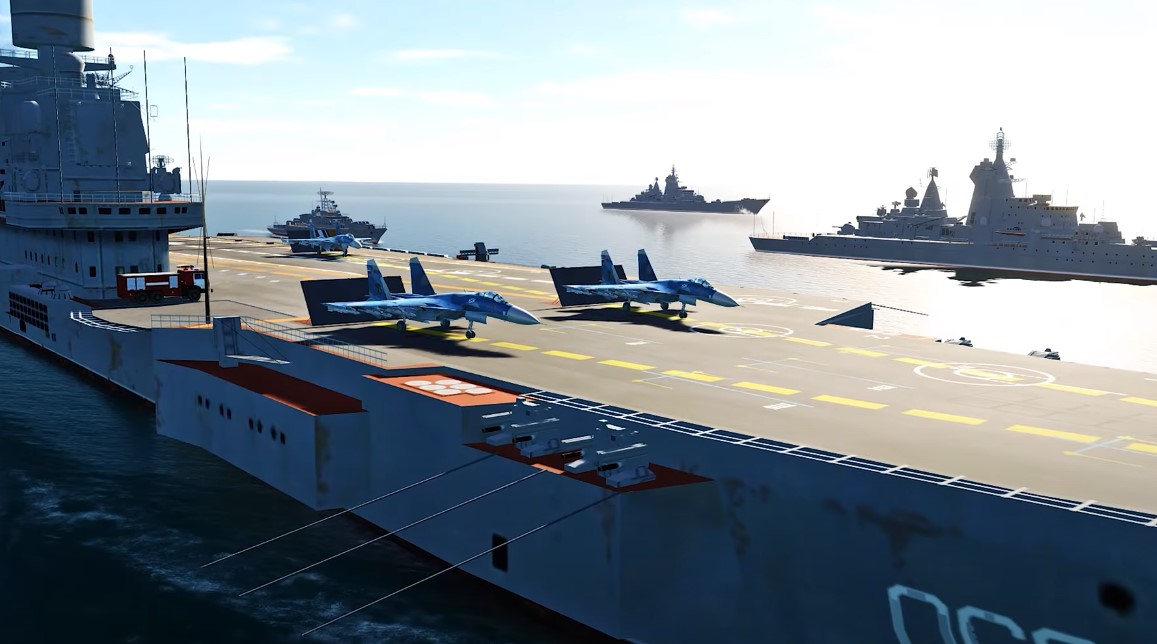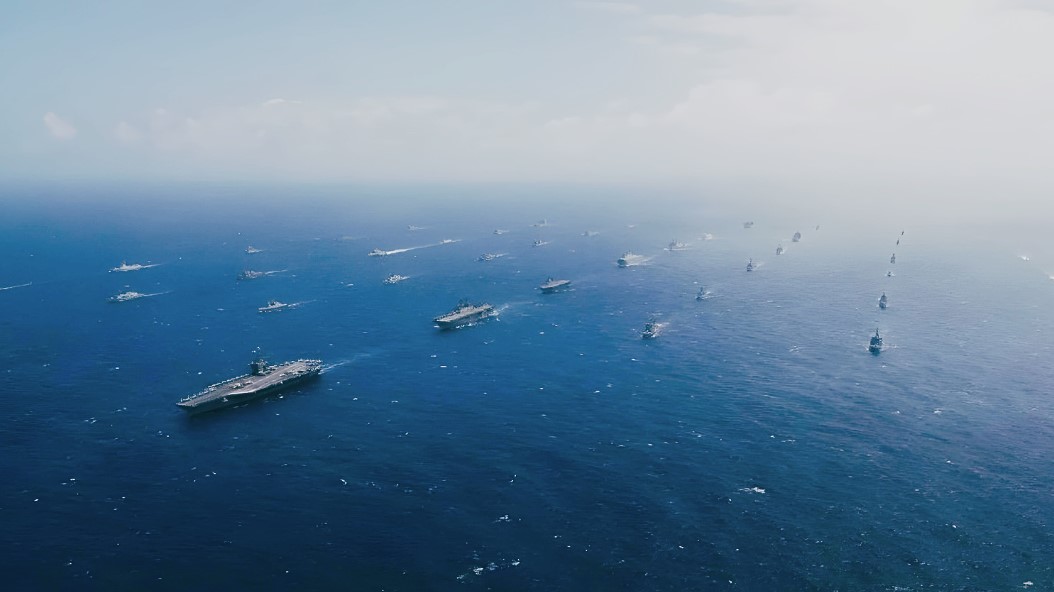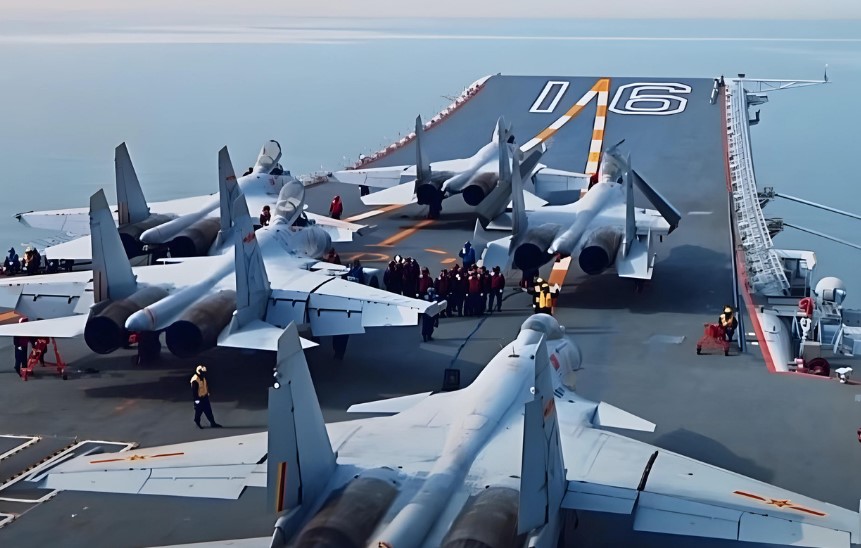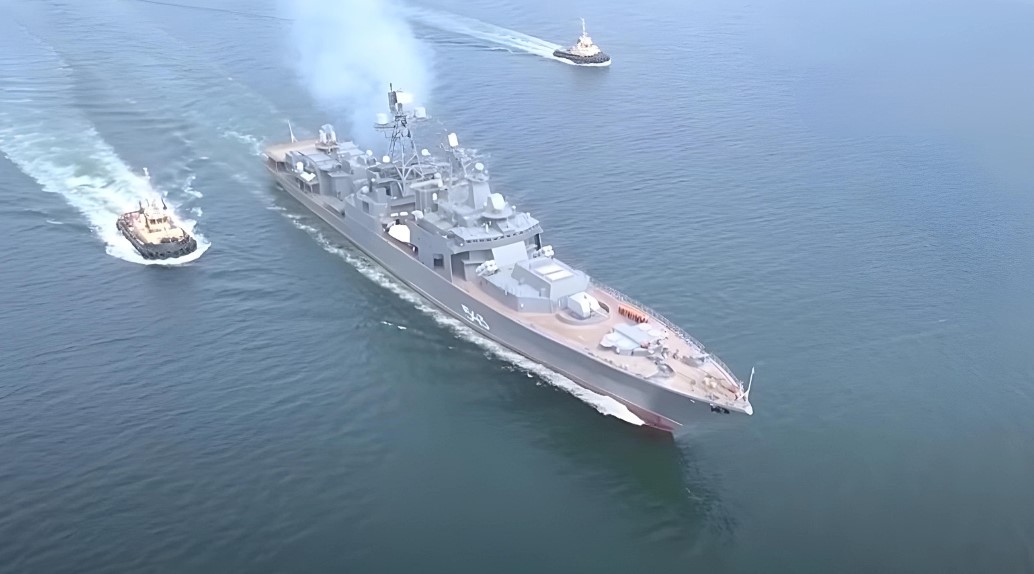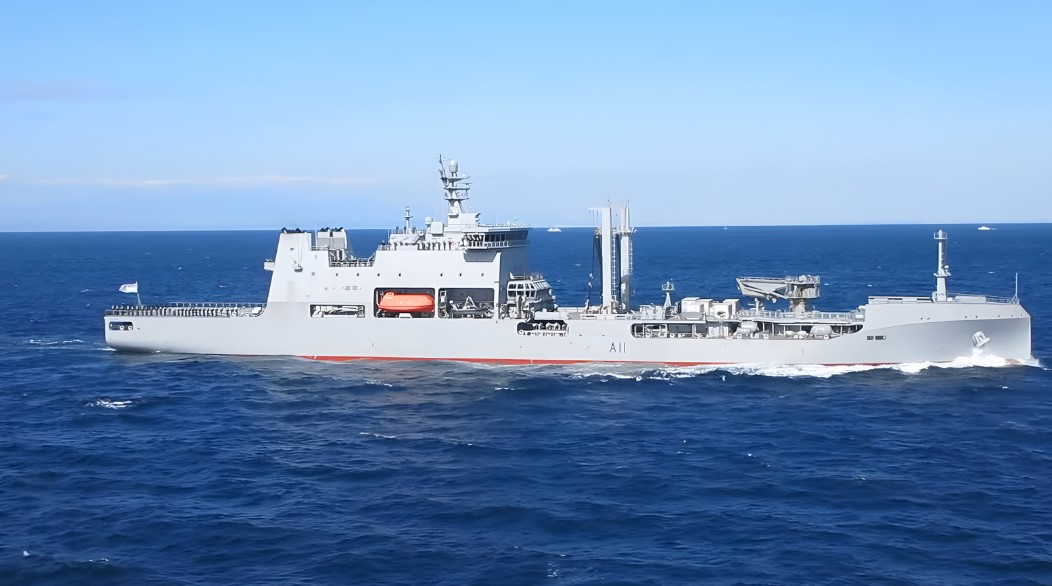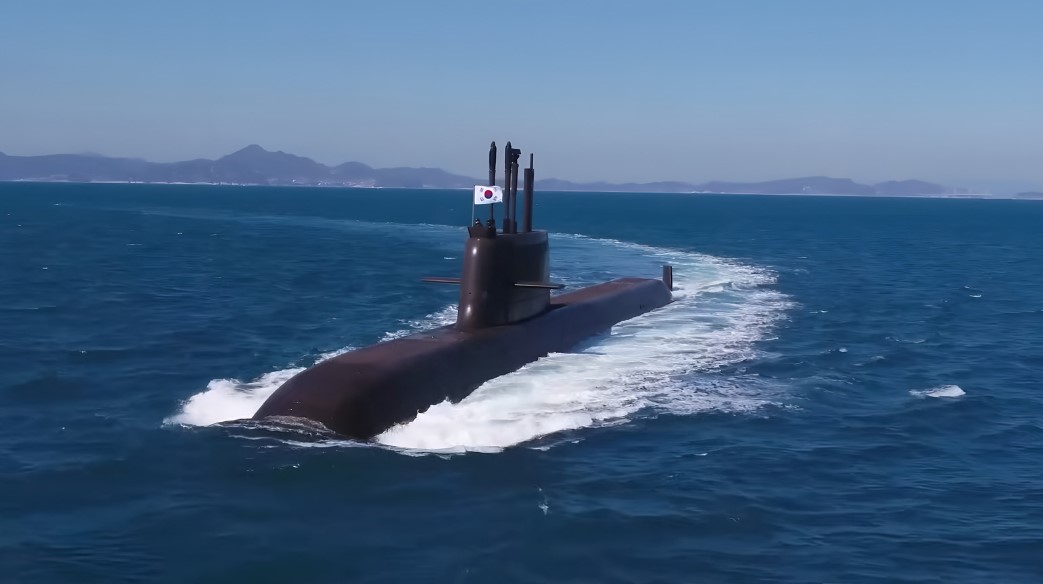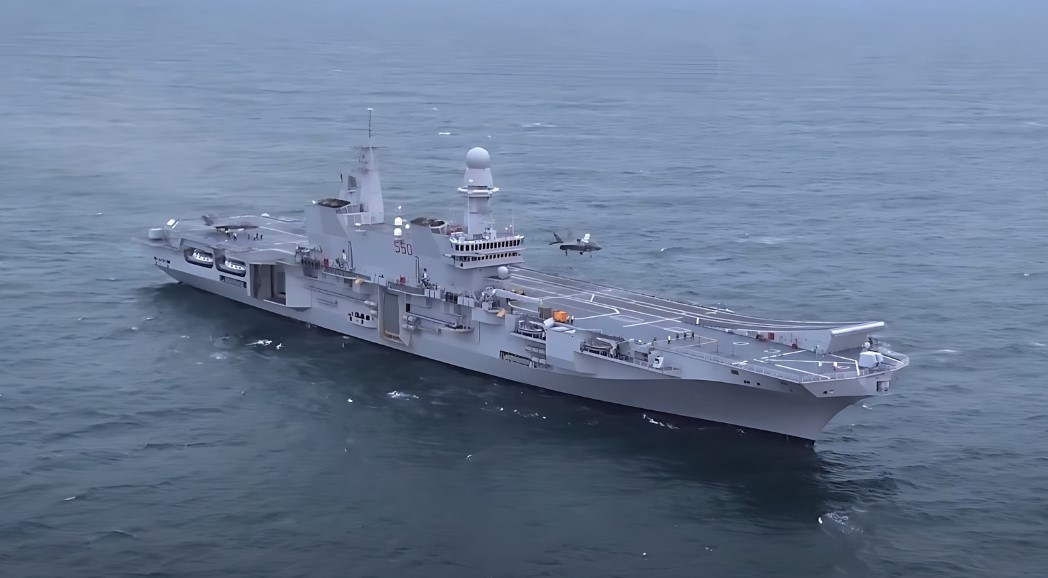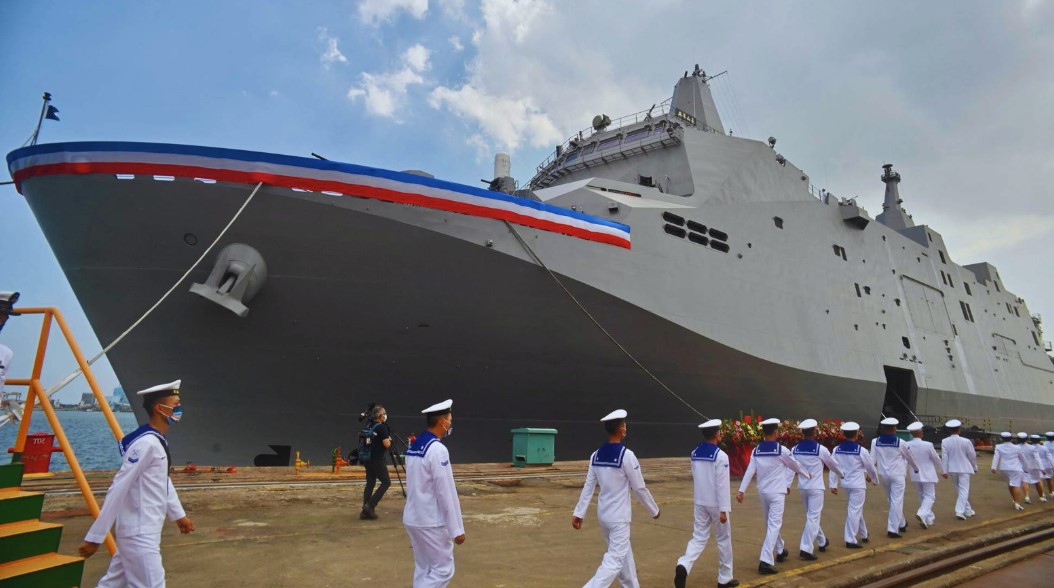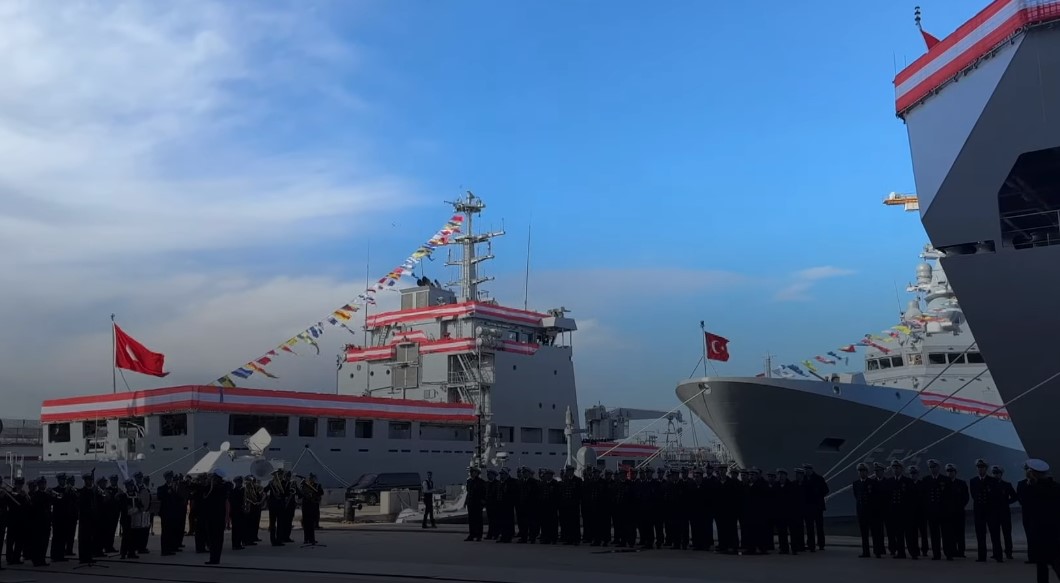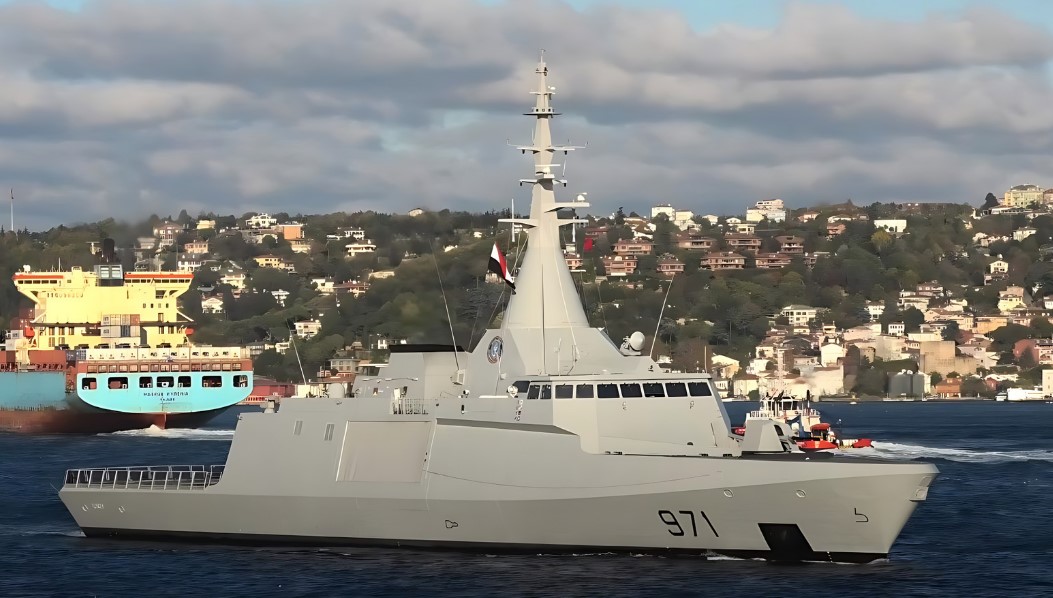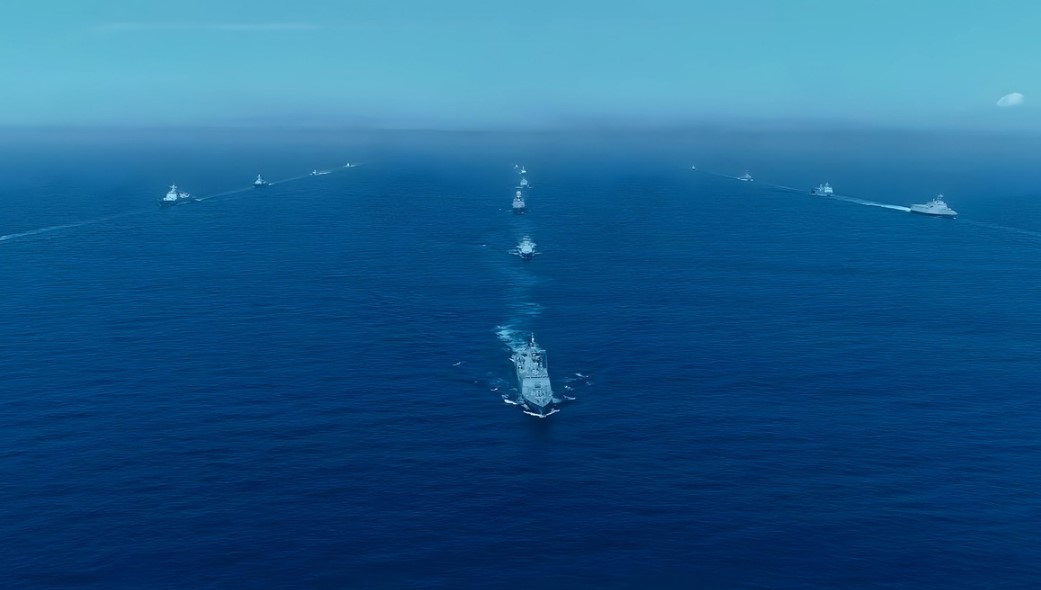Global naval power is an essential aspect of a nation’s military strength, shaping the strategic geopolitical landscape.
The United States Navy maintains its position at the pinnacle of naval superiority due to its considerable fleet and advanced technological assets.
Other prominent navies include the Chinese People’s Liberation Army Navy and the Russian Navy, which continue to expand and modernize their fleets, thereby escalating their global influence.
European powers, like the United Kingdom’s Royal Navy and the French Navy, along with the navies of India, Japan, and South Korea, hold considerable positions in the rankings due to their strategic capabilities and regional command.
Key Takeaways
- United States, China, Russia, United Kingdom, France, India, Japan, South Korea, Italy, Taiwan, with mentions of Turkey, Egypt, and Bangladesh.
- Naval power rankings consider fleet size, advanced technology, operational capabilities, and global reach. I.
- Naval budgets underpin fleet expansions and modernizations.
- The strategic positioning of navies and their global bases enable rapid deployment and influence over key maritime regions.
- Unmanned technologies and AI are revolutionizing naval warfare, enhancing precision and intelligence gathering.
- Navies are engaging in international partnerships and adopting new technologies.
Overview
Naval strength is no longer gauged solely by the number of vessels but by a composite of factors that include offensive and defensive capabilities, fleet diversity, operational range, and logistical support. Strategic positioning and alliance networks also play essential roles. Assessing power requires looking at personnel training, maintenance quality, and the experience garnered through active deployments and exercises.
Technological Advancements
The adoption of unmanned technologies and AI in navies has drastically changed maritime warfare. Navies incorporate these advancements to improve reconnaissance, stealth, and weapons systems. It results in enhanced precision in targeting and richer intelligence gathering, allowing for more informed decisions during complex operations.
Budget and Expenditure
Naval budgets are critical for sustaining and expanding maritime prowess. The United States Navy continues to hold a significant budget fostering advancements in technology and fleet expansions. Likewise, emerging superpowers are substantially increasing their naval budgets, which allows for modernization and the acquisition of powerful submarine fleets and a greater number of surface vessels. These expenditures reflect the prioritization of maritime strength in global defense strategies.
1. United States Navy
The United States Navy consistently holds the top position for naval capabilities, buoyed by its vast array of advanced vessels and extensive operational reach.
Fleet Composition
The United States Navy’s fleet boasts some of the most cutting-edge and diverse vessels in the world. They maintain 11 nuclear-powered aircraft carriers, which is a significant number compared to other nations. These carriers serve as the cornerstone of their power projection capabilities. Alongside these behemoths are a multitude of other ships:
- Submarines: Includes 68 nuclear-powered submarines, both ballistic and attack classes.
- Destroyers: Comprises over 90 Arleigh Burke-class destroyers.
- Cruisers: Operates 22 Ticonderoga-class cruisers with advanced Aegis combat systems.
- Amphibious Assault Ships: Contains 9 American and Wasp-class vessels.
- Support Vessels: Extensive auxiliary fleet including replenishment ships, tenders, and hospital ships.
Global Reach and Bases
The United States Navy sustains an unmatched global presence, facilitated by a network of naval bases and forward-deployed units. Key locations include:
- Pacific: Pearl Harbor, Yokosuka, and Guam.
- Atlantic: Norfolk and Europe via Naval Station Rota in Spain.
- Middle East: Bahrain serves as the hub for the 5th Fleet.
This extensive network enables rapid deployment of naval forces, underpinning their ability to respond to global crises and maintain open sea lines of communication.
- Personnel and Size: The US Navy is the largest naval force globally, with 349,593 active personnel, 101,583 in ready reserve, and 279,471 civilian employees.
- Fleet Composition: Features 480 ships, including 290 deployable combat vessels, and maintains a substantial logistics and support fleet with 50,000 non-combat vehicles.
- Air Power: Commands over 2,623 manned aircraft, supporting a wide range of naval operations and strategic missions.
2. Chinese People’s Liberation Army Navy
In 2024, the Chinese People’s Liberation Army Navy (PLAN) maintains its standing as one of the world’s foremost naval forces, with significant advancements in both shipbuilding and regional influence.
- Active Personnel: The PLAN has 300,000 active members, showcasing its large-scale manpower.
- Aircraft and Ships: With over 600 aircraft and 537 ships, including 19 replenishment vessels and 79 submarines, the PLAN demonstrates extensive aerial and maritime capabilities.
- Key Vessels: The fleet includes 3 aircraft carriers, 51 destroyers, 49 frigates, and 70 corvettes, highlighting its power projection and diverse operational capacities.
Shipbuilding Momentum
The PLAN’s continued focus on expanding and modernizing its naval capabilities is evident in its shipbuilding programs. It consistently launches advanced vessels across various classes, from destroyers to amphibious assault ships. Notably, the rapid commissioning of advanced surface combatants, including Type 055 destroyers, signifies a robust enhancement in maritime warfare technology and shipbuilding capacity.
- Surface Combatants: — Type 055 guided-missile destroyers
- Submarines: — Both nuclear and conventional types
- Amphibious Assault Ships: — Capable of launching and supporting maritime operations
Area of Influence
The PLAN is not confined to its national boundaries but exhibits its power across regional seas and through an increasing presence in global waters. The strategic deployment of assets around vital maritime chokepoints, such as the South China Sea, underscores the navy’s intent to assert its influence far beyond the contiguous zones. Its expanding logistic and support network through the development of overseas military bases furthers its operational reach.
- South China Sea: — Asserting claims and expanding presence
- Global Reach: — Developing overseas bases for extended operations
3. Russian Navy
The Navy boasts a dedicated force of approximately 150,000 to 160,000 active personnel, underscoring its vast human resource commitment to maintaining and operating its extensive fleet.
Diverse Fleet Composition
- Strategic Assets: It fields a significant number of submarines, including those capable of launching ballistic missiles, which form the backbone of Russia’s naval nuclear deterrence.
- Surface Fleet: The Navy operates a wide array of surface vessels, from an aircraft carrier and cruisers to destroyers and corvettes, totaling over 355 ships.
- Naval Aviation: With more than 355 aircraft, the Navy has a formidable aerial component, enhancing its reconnaissance, patrol, and combat capabilities.
- Specialized and Auxiliary Vessels: The fleet is complemented by 56 patrol boats, 4 patrol ships, 18 special-purpose vessels, 60 landing craft, and 11 tank landing ships, among others according to navalnews.
Global Presence and Influence
The Russian Navy’s strategic deployments in key geopolitical areas highlight Russia’s commitment to safeguarding its maritime interests and exerting influence on international waters.
Modernization and Challenges
The Northern Fleet is undergoing extensive modernization, reflecting Russia’s emphasis on bolstering its Arctic presence according to CSIS. The fleet’s enhancement includes the incorporation of advanced icebreakers, new submarines, and cutting-edge surface vessels designed for the challenging Arctic environment.
Strategic Role
As a critical component of Russia’s defense strategy, the Navy not only secures the nation’s borders but also shapes regional dynamics and contributes to global security through its operational presence in international waters.
4. United Kingdom Royal Navy
The United Kingdom’s Royal Navy continues to assert its significance with advanced capabilities and global reach, with the Carrier Strike Groups being a pinnacle of its naval power, complemented by extensive overseas deployments.
- Personnel and Capabilities: The Royal Navy, with 32,000 active personnel, operates a diverse and modern fleet, including two Queen Elizabeth-class aircraft carriers and nuclear-powered submarines, enhancing its global reach and strategic deterrence according to Royal Navy.
- Fleet Composition: Comprises 72 ships and 160 aircraft, featuring a broad mix of vessels for varied operational needs, including 2 aircraft carriers, 10 submarines, 6 destroyers, and 12 frigates, highlighting its naval strength and versatility.
- Global Role: Engages in international security efforts, joint operations, and plays a key role in supporting UK’s maritime interests and alliances, continuing its legacy as a pivotal maritime force.
Carrier Strike Groups
The Royal Navy fields its power through their prestigious Carrier Strike Groups, which center around the Queen Elizabeth-class aircraft carriers, HMS Queen Elizabeth and HMS Prince of Wales. These state-of-the-art vessels are escorted by a fleet of Type 45 destroyers and Type 23 or 26 frigates, offering air defense and anti-submarine warfare capabilities. They are further supported by integral logistical support and submarine protection that enhances their operational endurance and sustainability.
- Aircraft Carriers: HMS Queen Elizabeth, HMS Prince of Wales
- Destroyers: Type 45 (e.g., HMS Defender)
- Frigates: Type 23 (e.g., HMS Kent), Type 26 (e.g., HMS Glasgow)
- Auxiliary Ships: Tide-class tankers, Fort-class replenishment ships
Overseas Deployments
The Royal Navy maintains a strong global presence through its overseas deployments, which enable it to project force, secure trade routes, and uphold international maritime law. Key areas of deployment include the Persian Gulf, where the UK has a naval facility in Bahrain, and the Asia-Pacific region, reflective of its commitment to freedom of navigation in vital waterways such as the South China Sea.
- Persian Gulf: UK Naval Support Facility in Bahrain
- Asia-Pacific: Continuous naval presence and exercises
- Standing NATO Maritime Groups: Active participant
5. Indian Navy
In recent years, the Indian Navy has embarked on an ambitious journey to modernize and expand its naval capabilities, focusing on enhancing its blue-water operational capacity.
The Indian Navy’s expansion plans are geared towards achieving a 200-ship fleet by the end of the decade according to Economic Times. Central to these plans is the induction of the Vikrant-class aircraft carriers that will significantly boost the Navy’s power projection. They are also investing heavily in new destroyers, frigates, and submarines, including the Scorpene-class vessels, to strengthen their underwater warfare capability.
Strategic Partnerships
India has been actively engaging in strategic partnerships with major powers to augment its naval strength. A prime example is the agreement with Russia for the lease of nuclear-powered submarines, which offers a strategic edge in the Indian Ocean region. Collaborations with the United States, such as the Communications, Compatibility and Security Agreement (COMCASA), are pivotal for the Indian Navy’s access to advanced communication systems and technologies.
- Strategic Force: With 67,252 active and 75,000 reserve personnel, the Indian Navy is a key player in India’s defense and regional stability, emphasizing maritime security in the Indian Ocean as per CFR.
- Fleet Diversity: Operates 150 ships, 300 aircraft, including 2 aircraft carriers, 16 attack submarines, and 13 frigates, highlighting its modern and versatile naval capabilities.
6. French Navy
The French Navy maintains a strategic nuclear deterrent force commonly known as the “Force de frappe.” At the core of this force are the Triomphant-class ballistic missile submarines. These submarines are equipped with M51 SLBMs (Submarine-Launched Ballistic Missiles) capable of delivering nuclear warheads over considerable distances, guaranteeing a second-strike capability in the nation’s nuclear deterrence policy.
Overseas Presence
The French Navy’s overseas presence is characterized by a network of bases across the globe, including facilities in the Indian Ocean, the Caribbean, and Pacific territories according to a study. Their fleet includes a range of surface vessels such as the Mistral-class amphibious assault ships and Aquitaine-class frigates, which are instrumental in projecting French naval power and upholding maritime security on an international scale. They routinely conduct operations focused on maritime surveillance, protection of French interests, and participation in multinational naval exercises.
- Global Presence: With 37,000 active personnel, including 7,000 civilians, the French Navy upholds France’s maritime legacy through a modern fleet and global operations.
- Key Assets: Operates over 180 ships and 178 aircraft, including nuclear submarines, the nuclear-powered aircraft carrier Charles de Gaulle, and amphibious assault ships.
- Strategic Operations: Focuses on power projection, anti-piracy, maritime surveillance, and international missions, supported by technological innovation and international cooperation.
7. Japan Maritime Self-Defense Force
The Japan Maritime Self-Defense Force (JMSDF) is recognized for its advanced technological capabilities and strategic focus on island defense. It engages extensively in international collaboration to enhance maritime security.
Island Defense Focus
The JMSDF operates with a clear strategic mandate: to protect Japan’s widespread archipelago. Japan’s geographic configuration necessitates a robust maritime force capable of quick deployment and sustained presence in the region’s surrounding waters. In pursuing its defense objectives, the JMSDF has developed an impressive fleet of ships and submarines, including its sophisticated Sōryū-class submarines, known for their stealth and advanced sonar capabilities.
International Collaboration
Japan’s naval strategy is not limited to national defense; the JMSDF also plays a significant role in international security. Engagements in joint exercises with allies, such as the United States, exemplify Japan’s commitment to maintaining a free and open Indo-Pacific region. The collaboration extends beyond exercises, including sharing of technology, intelligence, and strategic military assets to reinforce collective maritime capabilities.
- Technological Prowess: The JMSDF, with 51,000 personnel, showcases advanced maritime capabilities with a modern fleet that includes destroyers, submarines, and helicopter carriers according to USNI news.
- Strategic Focus: Prioritizes regional security, maritime surveillance, and disaster response, with helicopter carriers enhancing amphibious operations and defense capabilities.
- International Engagement: Committed to fostering regional stability through international collaborations and joint exercises, despite constitutional limitations, ensuring Japan’s maritime interests and security in the Indo-Pacific.
8. Republic of Korea Navy
The Republic of Korea Navy (ROKN) ranks as a formidable maritime force, with a strategic emphasis on defensive capabilities and notable engagements in international collaborations.
Defense Focus
The ROKN has a robust fleet that includes destroyers, frigates, corvettes, submarines, and amphibious assault ships. It maintains a focus on advanced anti-submarine warfare (ASW) capabilities and mine countermeasure (MCM) operations to safeguard its territorial waters and sea lines of communication, especially in the face of regional threats.
- Maritime Strength: The ROKN, with 70,000 personnel, showcases an advanced fleet of destroyers, submarines, and amphibious vessels, aimed at securing sea lanes and deterring aggression.
International Collaboration
The ROKN is involved in various international operations and training exercises to enhance interoperability with allies. It participates in RIMPAC, the world’s largest international maritime warfare exercise, and frequently conducts joint exercises, especially with the United States Navy, highlighting a commitment to regional stability and collective security.
Collaborative Initiatives:
- Joint Exercises: Regular participation in Foal Eagle and Key Resolve with strategic ally, the United States as per The Diplomat.
- Humanitarian Missions: Active involvement in humanitarian assistance and disaster relief (HADR) efforts across the globe.
9. Italian Navy
The Italian Navy ranks among the most capable maritime forces in Europe, with modern technological advancements and a respectable fleet size. The force maintains a significant presence in the Mediterranean Sea and is integral to Italy’s national defense and international obligations.
Manpower and Fleet
The Italian Navy is staffed by a professional and well-trained workforce, adept at operating a diverse array of vessels. Its fleet consists of aircraft carriers such as the ITS Cavour, modern FREMM-class frigates, and Type 212 submarines, reflecting Italy’s commitment to maintaining a balanced and technologically up-to-date naval force.
- Aircraft Carriers: 2
- Destroyers: 4
- Frigates: 10
- Submarines: 8
- Patrol Ships and Boats: 10
- Amphibious Assault Ships: 3
- Strategic Maritime Force: 30,923 active personnel
International Collaboration
Italy’s naval force is actively engaged in various international collaborations, enhancing its operational capabilities and strategic reach. The navy participates in NATO maritime groups and contributes to multinational security operations. Italy has also partnered with France in the Horizon project, creating advanced air-defense destroyers that are a testament to European naval cooperation.
- NATO Maritime Groups: Active participation
- Horizon Project: 4 Destroyers (with France)
- EU Navfor Operation: Active involvement in anti-piracy missions
10. Taiwanese Navy
The Taiwanese Navy stands as a significant maritime force within the East Asian region, focusing on modernization and strategic deterrence to offset regional tensions and maintain sovereignty.
- Key Maritime Force: With 40,000 personnel, the Taiwanese Navy operates submarines, surface ships, and aviation assets, focusing on maritime security and regional stability.
- Fleet Composition: Boasts a diverse fleet of 128 ships and 28 aircraft, including frigates, destroyers, and corvettes, underscoring its capability to protect national sovereignty.
Taiwan’s naval capabilities are undergoing a comprehensive modernization process aimed at bolstering their defensive posture in the East Asian region. It operates a fleet that includes Kee Lung-class destroyers, Cheng Kung-class frigates, and a variety of missile boats and submarines, all crucial for the island’s asymmetric maritime strategies. Their focus on anti-access/area-denial (A2/AD) capabilities reflects the strategic need to deny or challenge adversaries’ naval operations in their territorial waters and the surrounding area.
3 More Worth Mentioning
11. Turkish Navy
- Number of Units: 90
- TvR (Total value Rating): 80.5
Serving as the maritime arm of the Turkish Armed Forces, the Turkish Navy has made significant strides in developing a robust domestic defense industry, underpinning ambitious naval projects. It possesses the capability to exert sea control in its adjacent waters.
A landmark development is the commissioning of the TCG Anadolu, a landing helicopter dock that has significantly enhanced the Turkish Navy’s global projection capabilities.
Capable of transporting over 700 naval infantry personnel, tanks, vehicles, and helicopters, the TCG Anadolu, inaugurated as the navy’s latest flagship on April 10, 2023, heralds a new chapter in Turkey’s naval operations.
12. Egyptian Navy
- Number of Units: 107
- TvR (Total value Rating): 72.4
Adopting a Western strategy for naval combat, the Egyptian Navy is tasked with safeguarding Egypt’s coastlines along the Mediterranean and Red Seas.
It stands as the preeminent naval power in both Africa and the Middle East, boasting a fleet that includes two French-built Mistral-class helicopter carriers/amphibious landing ships, distinguishing it as the only navy with aircraft carriers in Africa and the Middle East.
Submarines make up 7.5% of its total naval strength, highlighting its balanced force composition.
13. Bangladesh Navy
- Number of Units: 50
- TvR (Total value Rating): 58.6
The Bangladesh Navy plays a crucial role in protecting the nation’s maritime borders, spanning over 118,813 square kilometers.
Its primary missions involve defending key military installations, harbors, and economic zones, while also securing Bangladesh’s economic and military interests both domestically and internationally.
As the frontline force for disaster management within the country, the Bangladesh Navy additionally engages in humanitarian efforts globally, underscoring its dual role in national defense and international aid.
Frequently Asked Questions
Conclusion
The significance of naval power remains evident in 2024, with various countries investing in advanced technologies and expanding their fleets. The United States Navy continues to lead with its unmatched global reach and technological superiority.
Collectively, these powerful navies illustrate shifts in the global maritime order, where traditional and emerging sea powers shape the dynamics of naval strength and presence. As they continue to adapt and evolve, these navies not only secure their nations’ maritime boundaries but also play pivotal roles in international security and global trade routes.
Disclaimer
All information presented in this text is based on our perspectives and experiences. The content is provided for informational purposes only and is a reflection of the personal views of the authors. We do not guarantee the accuracy or reliability of the information provided and shall not be held responsible for any inaccuracy, omissions, or inaccuracies.

